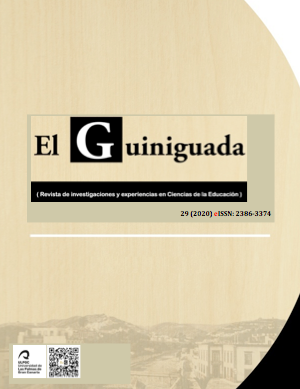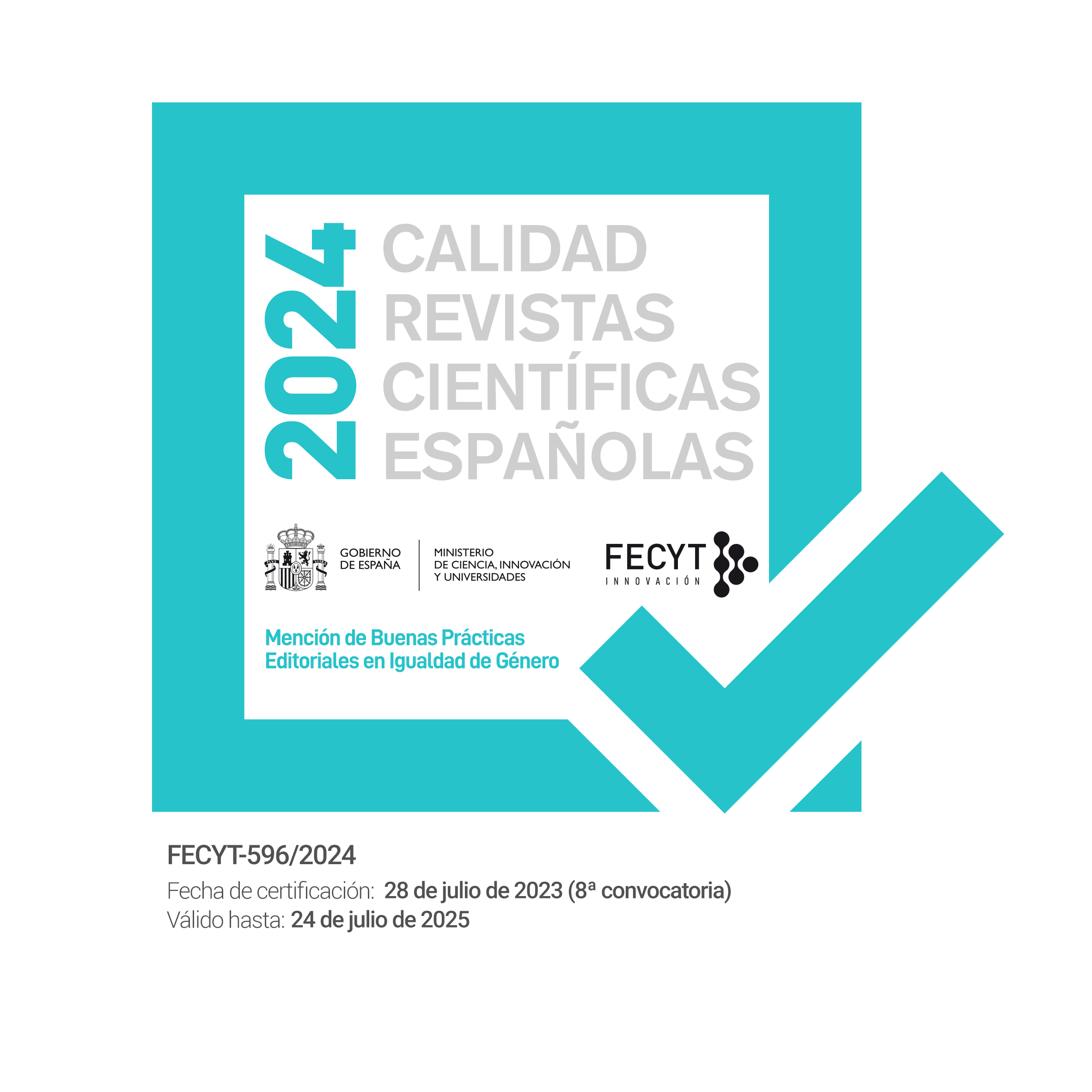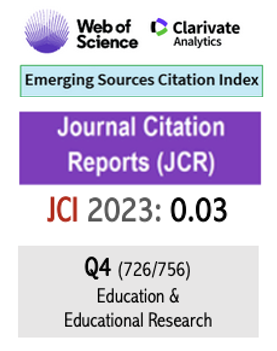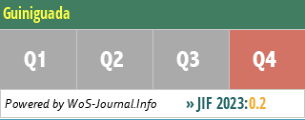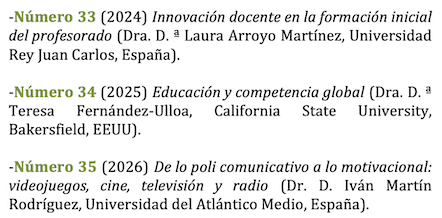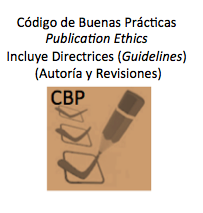Visiting Mary Shelley. Educational dialogues between science and literature
Keywords:
Mary Shelley, teacher education, interdisciplinarietyAbstract
This work presents an educational experience based on the novel Frankenstein by Mary Shelley (1818) with alumni of the degrees in preschool and primary school education, as part of an educational innovation project related to the integration of sciences and arts. The novel was selected because of the ephemeris of its publication, but also because there was an exposition entitled “Frankenstein or the modern Prometheus. Dialogues between science and literature”, directed by Pedro Ruiz-Castell at the University of Valencia. This lead to a learning unit carried out by one hundred preservice teachers with the main goal of developing cultural mediation strategies based on the design of learning materials for children integrating science and literature.
Downloads
References
Adams, J. y Oliver, A. (2014). Frankenstein. El primer libro de anatomía. E. Martí i Segarra (Trad.). Barcelona: Coco books. (2014).
Arbués, E. y Naval, C. (2014). Los museos como espacios sociales de educación. Estudios sobre Educación, 27, 132-151. https://doi.org/10.15581/004.27.133-151
Baños i Díez, J.E., Aramburu Beltrán, J.F. y Sentí Clapés, M. (2005). Biocinema. La experiencia de emplear películas comerciales con estudiantes de biología. Revista de Medicina y Cine, 1(2), 42-46. http://dx.doi.org/10.1177/0091270003260679
Camps, A. (comp., 2003). Secuencias didácticas para aprender a escribir. Barcelona: Graó.
Colomer, T., Ribas, T. y Utset, M. (1993). La escritura por proyectos: “Tu eres el autor”. Aula de Innovación Educativa, 14, 23-28. https://www.grao.com/es/producto/la-escritura-por-proyectos-tu-eres-el-autor
Cope, B., y Kalantzis, M. (eds., 2015). A Pedagogy of Multiliteracies. Learning by Design. Londres: Palgrave Macmillan.
Da Rocha, P.L.B., Pardini, R., Viana, B.F. y El-Hani, C.N. (2020). Fostering inter- and transdisciplinarity in discipline-oriented universities to improve sustainability science and practice. Sustainability Science, 15(3), 717-728. http://dx.doi.org/10.1007/s11625-019-00761-1
Echegoyen Sanz, Y. y Martín Ezpeleta, A. (2019). Travelling with Darwin and Humboldt. A transdisciplinary educational experience. Journal of Education, Culture and Society, 10(2), 111-125. http://dx.doi.org/10.15503/jecs20192.111.125
Gozalo Sáinz, M.J., Cuadrado Esclapez, G. y González González, M.T. (2002). Frankenstein. Un recurso didáctico en el aula de IFE. En: L. Sierra Ayala, E. Hernández (coords.), Lenguas para fines específicos VII. Investigación y enseñanza (pp. 115-122). Alcalá de Henares: Universidad de Alcalá.
Larrys, M. y Morey, B.B. (2017). A Ficção Científica na construção de compreensões sobre Natureza das Ciências. Enseñanza de las Ciencias. Revista de Investigación y Experiencias Didácticas, nº extra, 3715-3720. https://docplayer.com.br/137394648-A-ficcao-cientifica-na-construcao-de-compreensoes-sobre-natureza-das-ciencias.html
Meirieu, P. (1998). Frankenstein educador. Barcelona: Laertes.
Mínguez García, H. y Méndez Llopis, C. (2018). Didácticas de la edición en posgrado. Estrategias pedagógicas para condeptualizar relatos contemporáneos. SOBRE. Prácticas Artísticas y Políticas de la Edición, 4, 41-50. https://revistaseug.ugr.es/index.php/sobre/article/view/6531
Orellana Campbell, M. y Espinet Blanch, M. (2009). Los cuentos como una herramienta para la modelización compleja del entorno en la formación inicial de los maestros de ciencias. Enseñanza de las Ciencias, número extra, 2733-2737. https://ddd.uab.cat/record/130981
Pavés, G.M. y Martín, T. (coords., 2018). Frankenstein. Un mito literario en diálogo con la filosofía, las ciencias y las artes. Córdoba: Berenice.
Quintano-Martínez, P. (2019). Revisitando el género y lo monstruoso en Frankenstein o el moderno Prometeo de Mary Shelley. Revista Internacional de Ciencias Sociales Interdisciplinares, 7(2), 101-114. http://dx.doi.org/10.18848/2474-6029/CGP/v07i02/101-114
Reginato, V., Gallian, D.M.C. y Marra, S. (2018). Literature in the education of future scientists. A lesson of Frankenstein. Educacao e Pesquisa, 44(1), e157176. http://dx.doi.org/10.1590/s1517-9702201610157176
Rodríguez Gonzalo, C. (ed., 2008). La lengua escrita y los proyectos de trabajo. Propuestas para el aula. Catarroja: Perifèric edicions.
Santacana, J. et al. (eds., 2005). Museografía didáctica. Barcelona: Ariel.
Serafini, F. (2014). Reading the Visual. An Introduction to Teaching Multimodal Literacy. Nueva York: Columbia University.
Shelley, M. (2017). Frankenstein. Edición anotada para científicos, creadores y curiosos en general: Bicentenario 1818-2018. J.C. Vales, V. Campos González (Trads.). Barcelona: Ariel. (1818).
Trilla, J., Gros, B., López, F. y Martín M.J. (2003). La educación fuera de la escuela. Ámbitos no formales y educación social. Barcelona: Ariel.
Varela Nieto, C., Miñambres González, C., López Díaz, M. y Ríos Vázquez, S. (2015). De Frankenstein á última tecnoloxía da luz. Eduga. Revista Galega do Ensino, 70. http://www.edu.xunta.gal/eduga/970/outros/frankenstein-ultima-tecnoloxia-da-luz
Vega, P. (2002). Frankensteiniana. La tragedia del hombre artificial. Madrid: Tecnos.
Winkelman, P. (2006). Frankenstein goes to engineering school. European Journal of Engineering Education, 31(4), 449-457. https://doi.org/10.1080/03043790600676463
Yanes, C. (2011). The museum as a representation space of popular culture and educational memory. History of Education & Children´s Literature, 6(2), 19-31. https://www.researchgate.net/publication/292826299_The_museum_as_a_representation_space_of_popular_culture_and_educational_memory
Published
How to Cite
Issue
Section
License
Authors who publish with this journal agree to the following terms:
- Authors retain copyright and grant the journal right of first publication with the work simultaneously licensed under a Creative Commons Attribution License that allows others to share the work with an acknowledgement of the work's authorship and initial publication in this journal. You can not make a commercial use of the work. The use derived from the work is also not allowed.
- Authors are able to enter into separate, additional contractual arrangements for the non-exclusive distribution of the journal's published version of the work (e.g., post it to an institutional repository or publish it in a book), with an acknowledgement of its initial publication in this journal.
- Authors are permitted and encouraged to post their work online (e.g., in institutional repositories or on their website) prior to and during the submission process, as it can lead to productive exchanges, as well as earlier and greater citation of published work (See The Effect of Open Access).
